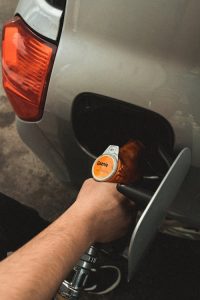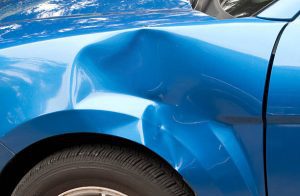How to Improve Your Car’s Fuel Efficiency


How to Improve Your Car’s Fuel Efficiency


Introduction
In today’s world, where fuel prices are constantly rising and environmental concerns are becoming increasingly important, it’s crucial to find ways to improve your car’s fuel efficiency. Not only will this help you save money on fuel costs, but it will also reduce your carbon footprint. In this article, we will discuss several practical steps you can take to enhance your vehicle’s fuel efficiency, allowing you to drive farther on each gallon of fuel.
1. Maintain Proper Tire Pressure
One of the simplest yet often overlooked ways to improve fuel efficiency is by maintaining the proper tire pressure. Underinflated tires increase rolling resistance, which requires more energy (fuel) to propel the vehicle. To ensure your tires are properly inflated, follow these steps:
- Use a tire pressure gauge to check the pressure in each tire.
- Refer to your vehicle’s owner manual or the sticker inside the driver’s door jamb for the recommended tire pressure.
- Add or release air as needed, using an air compressor or visiting a nearby gas station.
2. Reduce Excess Weight
Carrying unnecessary weight in your vehicle can have a significant impact on fuel efficiency. The heavier the car, the more fuel it requires to move. To reduce excess weight, follow these guidelines:
- Remove any unnecessary items from your trunk or backseat that you don’t regularly need.
- Avoid using roof racks or cargo carriers when not in use, as they increase wind resistance and reduce fuel efficiency.
- If you have a habit of leaving heavy objects in your car, consider decluttering and removing them to improve fuel efficiency.
3. Optimize Your Driving Habits
Your driving habits can greatly affect fuel efficiency. By making a few adjustments to your driving style, you can achieve significant fuel savings. Here are some tips:
3.1. Avoid Aggressive Acceleration and Braking
Rapid acceleration and harsh braking consume more fuel. Instead, practice smooth and gradual acceleration and deceleration. Anticipate traffic flow and adjust your speed accordingly to avoid sudden stops and starts.
3.2. Maintain a Consistent Speed
Driving at a consistent speed can improve fuel efficiency, especially on highways. Use cruise control whenever possible to maintain a steady pace and reduce fuel consumption.
3.3. Reduce Idle Time
Idling your car wastes fuel. If you anticipate being stationary for more than a minute, it’s best to turn off the engine. This applies to situations like long traffic lights, drive-throughs, or waiting for someone in a parked car.
3.4. Plan Your Routes
Efficient route planning can help you avoid congested roads, reduce mileage, and save fuel. Utilize GPS navigation or smartphone apps that provide real-time traffic information to find the most optimal routes.
4. Regular Vehicle Maintenance
Proper maintenance is essential for optimal fuel efficiency. Neglected or poorly maintained vehicles tend to consume more fuel. Follow these maintenance tips to keep your car running efficiently:
4.1. Regular Oil Changes
Schedule regular oil changes as recommended by your vehicle manufacturer. Fresh oil reduces engine friction, allowing it to operate more efficiently and consume less fuel.
4.2. Air Filter Replacement
A clogged air filter restricts airflow to the engine, reducing fuel efficiency. Replace your air filter at regular intervals, typically every 12,000 to 15,000 miles, or as per your vehicle manufacturer’s recommendation.
4.3. Spark Plug Inspection and Replacement
Worn-out spark plugs can lead to incomplete combustion and decreased fuel efficiency. Check your spark plugs regularly and replace them according to your vehicle manufacturer’s guidelines.
4.4. Wheel Alignment and Regular Tune-Ups
Improper wheel alignment and neglected tune-ups can negatively impact fuel efficiency. Ensure your vehicle undergoes regular wheel alignments and tune-ups to maintain optimal performance.
5. Choose the Right Fuel
Using the appropriate fuel for your vehicle can contribute to improved fuel efficiency. Refer to your vehicle’s owner manual to determine the recommended fuel type and octane rating. Using a higher octane fuel when it is not necessary does not enhance performance or fuel efficiency.
6. Consider Aerodynamic Enhancements
Reducing wind resistance can lead to improved fuel efficiency, particularly at higher speeds. Consider the following aerodynamic enhancements:
6.1. Remove Roof Accessories
Roof racks, bike racks, or storage boxes create drag and decrease fuel efficiency when not in use. Remove them when you don’t need them to minimize wind resistance.
6.2. Close Windows at High Speeds
Open windows at high speeds can disrupt the vehicle’s aerodynamics, causing increased drag. To improve fuel efficiency, close your windows and use the air conditioning instead.
Conclusion
Improving your car’s fuel efficiency not only saves you money but also reduces your impact on the environment. By following the steps outlined in this article, such as maintaining proper tire pressure, reducing excess weight, optimizing your driving habits, performing regular vehicle maintenance, choosing the right fuel, and considering aerodynamic enhancements, you can enhance your car’s fuel efficiency and drive farther while minimizing your carbon footprint. Implement these tips today and enjoy the benefits of a more efficient and eco-friendly vehicle.








